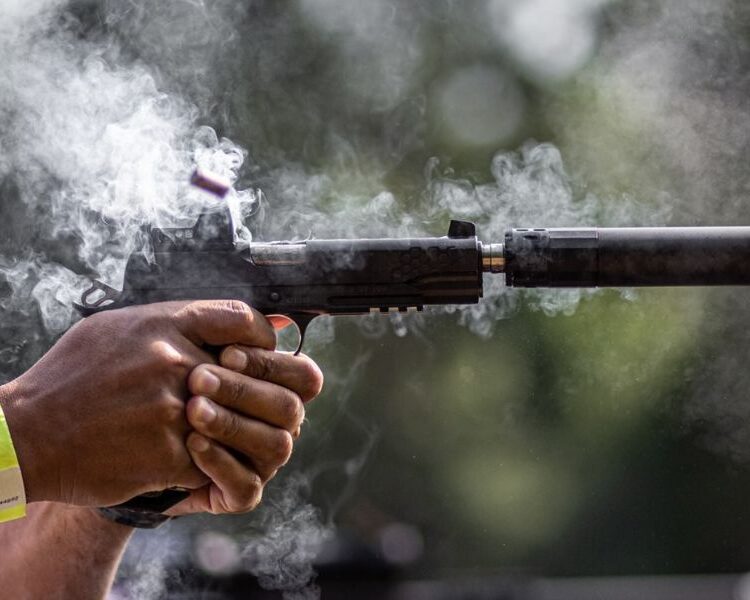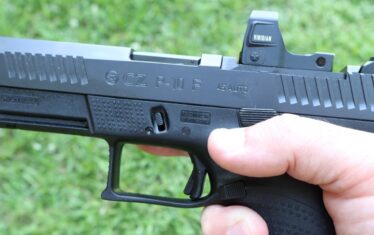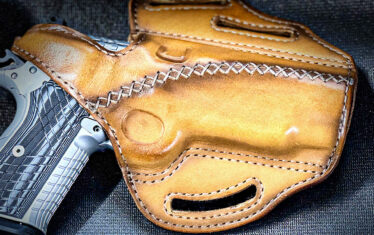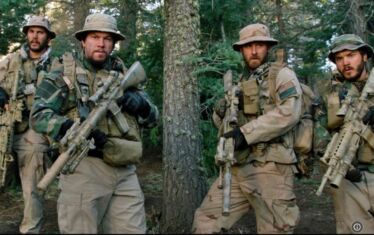From Kimber of Oregon to modern-day Kimber Manufacturing Inc., today we’re talking about the history of this impressive firearms manufacturer that has managed to carve out its own niche in the competitive firearms industry.
More commonly known as just Kimber, the company’s first iteration originated in Clackamas, Oregon, in 1979. Their initial goal was to produce high-quality sports rifles, but that mission expanded and evolved rapidly over the years to become something almost unrecognizable from the original. Nowadays, their catalog includes many revolvers, rifles, and, most significantly, their line of specialized 1911s.
Their rise from a small single-person operation to an industry power player to closing their doors and back again makes it evident how much people love their products. The company has had to navigate significant challenges and came out the other side in one piece. Let’s examine how it all went down and overview some of the more popular models that helped them get where they are today.
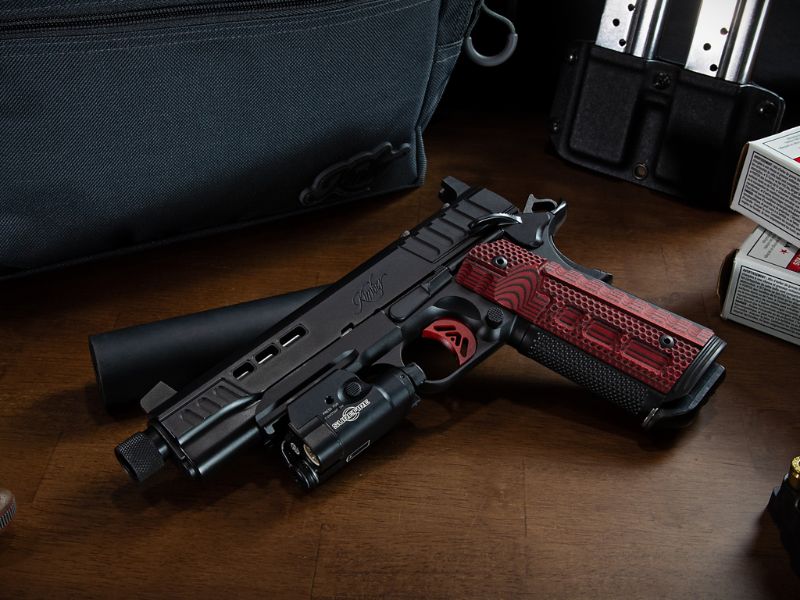
The History of Kimber
Kimber of Oregon was originally founded in 1979 by Australian immigrant Jack Warne and his son Greg Warne with a clear idea. They wanted to manufacture firearms that combined traditional craftsmanship with precision engineering.
Initially, Kimber focused on producing rimfire rifles, particularly small-caliber .22 rifles. Although small and specialized, this niche set the stage for Kimber’s reputation as a reliable firearms manufacturer. They did so well in the early days that they ended up purchasing the rights to a Brownell quick-detaching rifle scope mounting system to complement their line of products.
Despite early expansions and success, the company had some significant financial issues in the 1980s and ’90s. When they were developing their M89 BG Rifle, they held a private stock offering that was supposed to fix some of their cash flow issues, but unfortunately, it didn’t meet their expectations. In ’89, an Oregon-based investor, Bruce Engel, purchased Kimber Oregon to remedy the company’s issues. It didn’t work, unfortunately. They filed for bankruptcy shortly after, and their assets were liquidated.
After the closure, many of the original employees went their separate ways. Some left to find Cooper Firearms of Montana. Jack Warne went to open Warne Manufacturing, and his son Greg decided to try to reopen Kimber a few years later.
The Revival & Restructuring
When Greg Warne tried to bring back the Kimber of old, he got financial backing from one Les Edelman. Together, they managed to get their hands on some of the original tooling that was liquidated when the company originally went bankrupt. They used all this to create the new Kimber of America in 1993. This new Kimber of America, run by Greg & Les, was not long for the world, at least in its current form.
The Assault Weapons Ban of ’94 shook the entire industry in a significant way. A combination of the change of legislation putting the market into flux, some continued financial issues, and conflict of leadership led to a restructuring. Les Edelman acquired most of the company and removed Greg Warne from his position and the company.
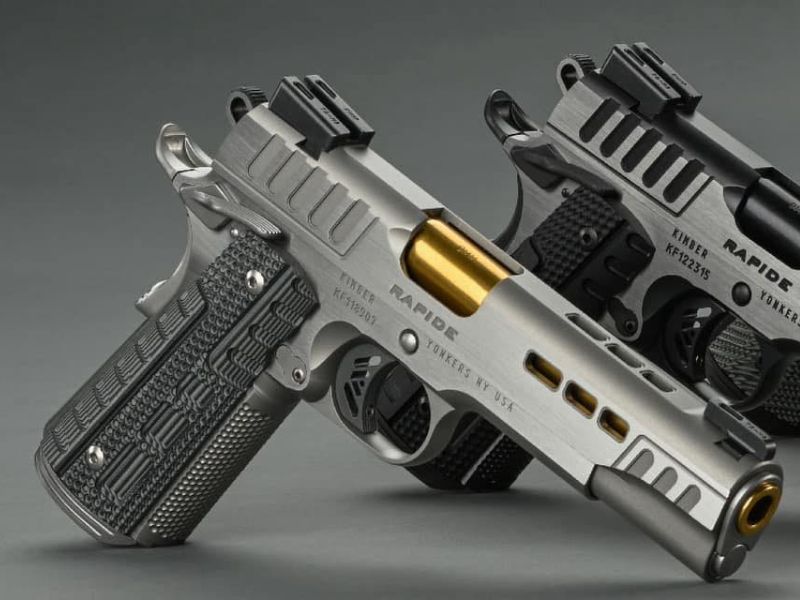
Around this time, Kimber began to make a more significant comeback in the industry; in addition to the change in leadership, they changed a major point of their business model. Previously, Edelman had purchased Jerico Precision, a mechanical manufacturer based in New York. He took their existing manufacturing infrastructure and Kimber’s talent and reputation and started to build out a new line of luxury M1911s, which would eventually be what the company was known for.
Kimber’s Best Blasters
Kimber’s modern catalog of firearms has gotten more substantial since the days of Kimber of Oregon; nowadays, they have popular handguns, rifles, and revolvers. Let’s get into it, starting with arguably the most popular, Kimber’s 1911s.
Kimber’s Many 1911s
The Kimber 1911s are the flagship of Kimber’s modern marketing and product strategy. These modernized 1911s are all about precision, reliability, and customization. They’re the product of everything Kimber came to be and their position during the mid-’90s. They have more flavors of 1911s than Bluebell has ice cream, not even including their custom jobs.
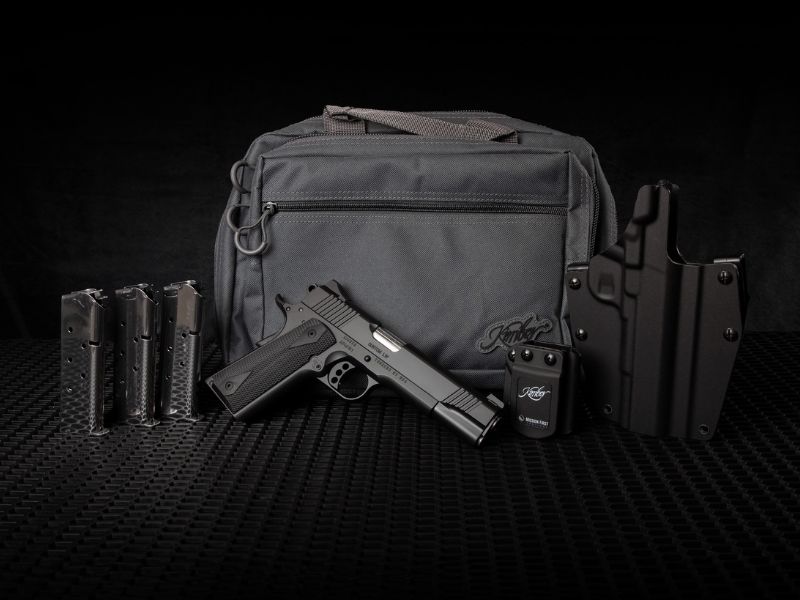
The 1911 already has an obvious cult following, being the massively popular firearm that it is. So naturally, when Kimber brings their best to the table, they’re quite well received.
Kimber’s Micro Series
The concealed carry market is one of the most popular niches of the firearms market and consumer base. Kimber’s contribution to this trend is their Micro series. Their tagline for the product is “Kimber Quality in a Pocket-Size .380 ACP Package.” They are effectively small 1911s.
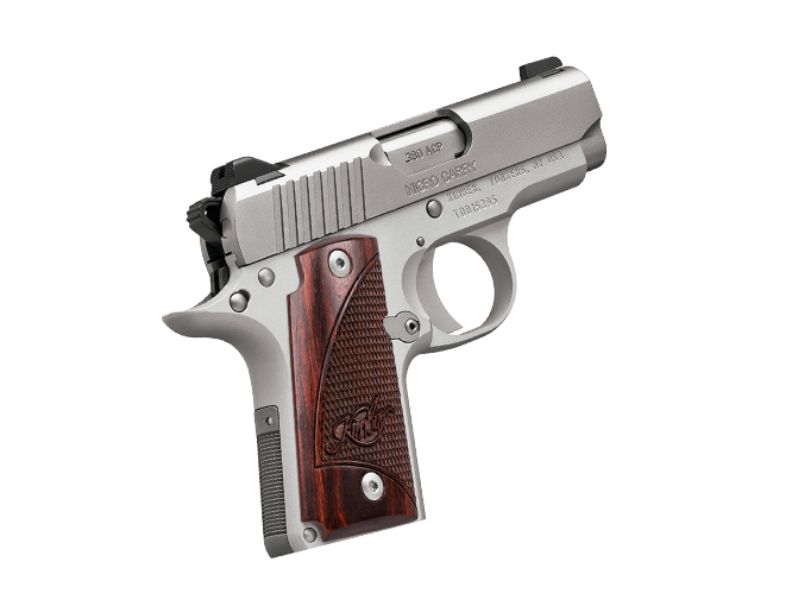
Kimber’s Hunting Rifles
While their rifles aren’t as much of their focus anymore, Kimber still prides themselves on their rifles. While they may have fewer flavors of these than their 1911s, they still have plenty to choose from. They’ve got their Montana Classic and Subalpine, to name a few. You can mix and match several of their options, too, although most of them are available in 6.5 Creedmoor & .308 Win.

Kimber’s Revolvers
In recent years, Kimber has also ventured into the revolver market to expand their market share.
Their series of revolvers is called the K6s. They’re available in .357 Mag and are small enough to be decently concealed carry guns. The base model has a two-inch barrel and a 1.39-inch diameter cylinder and is constructed of stainless steel. It weighs in at 23 ounces before you load it, too. They’re also available in .38 Special as the K6X3, their extra small revolver, because why not push the envelope further?
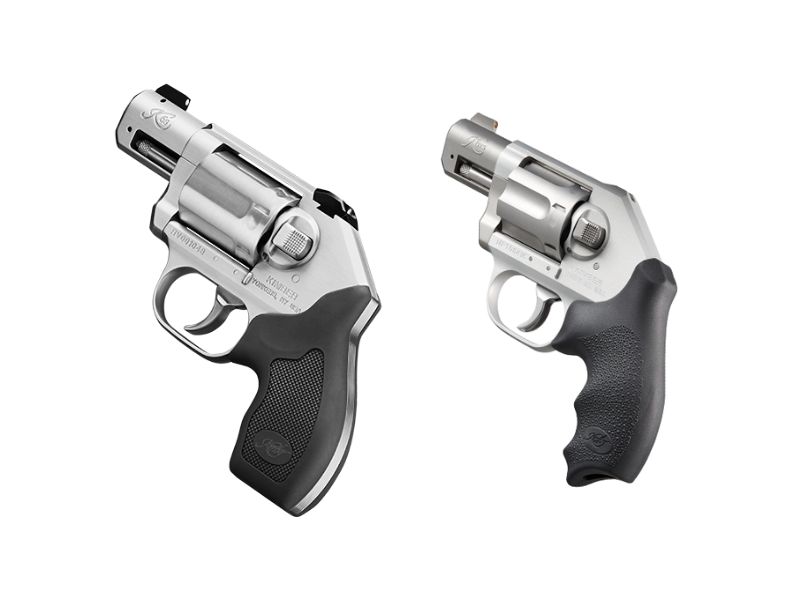
The Custom Shop
This one can be confusing; you might think the Kimber Custom shop is effectively a gunsmith where you can build a blaster but you’d unfortunately be wrong. The custom in the custom shop implies that they have “custom” features; these are the cream of the crop.
Currently, they only have two pistol models live in their custom shop, the Super Jägare and Super Match II, which retail at $3,012 and $3,120, respectively.
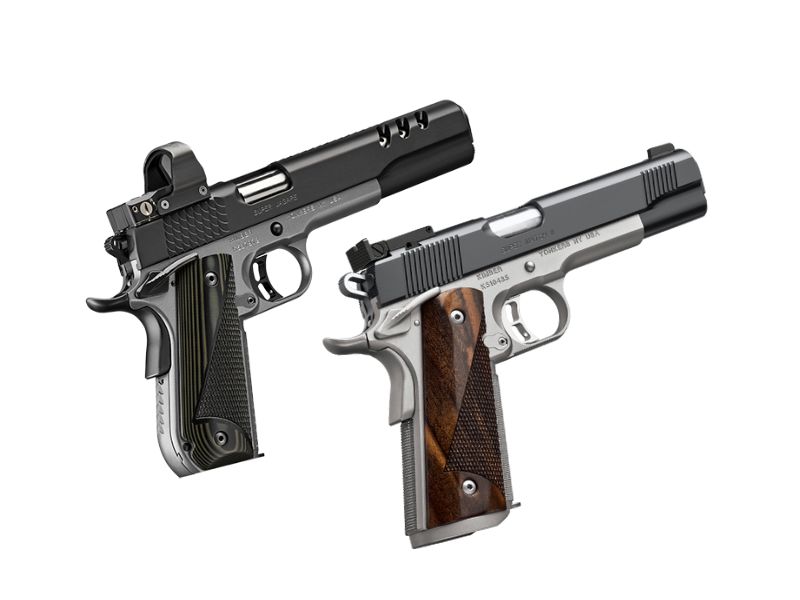
Let’s start with the Super Jägare. It’s a 10 mm caliber, which Kimber says is for close-range hunting of game and varmint. It features a 6-inch stainless steel barrel, a DeltaPoint Pro optic sight, and Micarta grips. The frame and slide are made of stainless steel with a charcoal gray finish and a diamond-like carbon coating. It weighs 42 ounces with an empty magazine, has a magazine capacity of eight rounds, and comes with a solid aluminum trigger.
Next is the Super Match II, their competition .45 ACP pistol. It boasts an accuracy guarantee of five shots within one inch at 25 yards. (Assuming you can guarantee the five shots.) It features a five-inch steel, match-grade barrel, satin silver stainless steel frame with checkering, matte black slide with aggressive serrations, adjustable sights, and fancy walnut grips. The pistol, which weighs 39 ounces with an empty magazine, comes with an eight-round magazine capacity and a premium aluminum, match-grade trigger.
Keeping Up With Kimber
Kimber America may have started as a small operation in Oregon, focusing on rifles, but that’s not the case anymore. Over the years, it has evolved into a globally recognized brand. Kimber’s journey is marked by innovation, craftsmanship, and their share of challenges. Despite these difficulties, the company has still managed to carve out its own space in a competitive landscape.
A transformation from a modest beginning to a prestigious brand is no small feat. I am excited to see where they go over the next few years and what more they have to offer.





